Haute Couture Viticulture: The Lasting Power Of Domaine de Courcel’s Great Pommards Evidenced in Collection Spanning a Quarter Century
Haute couture is the ultimate expression of French style, whether it is made manifest in clothing, art or wine. The word ‘couture’ may, in this instance, apply to anything handmade, but to add the qualifier ‘haute’, the requirements are more stringent.
About 95% of Pommard vineyards are owned by families, but only about half of them actually produce and label their own wines. Among them, Domaine de Courcel leads the pack, proving the difference between making wine and making haute couture wine.
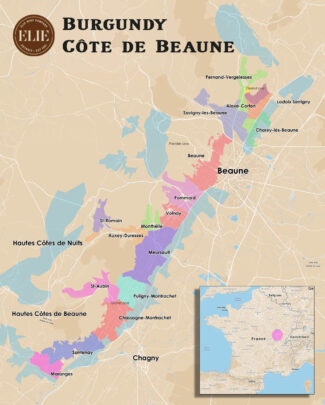
Pommard is a fine occasion for which to rise; many past examples from various producers are markedly rustic and may require years before they shed their tough skin—at which point, much of the fruit may have vanished. Under the leadership of Gilles de Courcel (with his sisters, Anne Bommelaer and Marie de Courcel) and the stewardship of winemaker Yves Confuron, Domaine de Courcel has striven for low yields (generally picked late in the season), fermented in whole-bunch cluster and aged a bit longer in oak before bottling. This is, perhaps, the key technical approach that has made de Courcel a leader in haute couture wine for more than four hundred years.
“Too often winemakers make a style, not a wine,” says Gilles de Courcel, “which is what many négociants do when they blend wines they buy from different estates.”
With vintage selections drawn from 1996 all the way to the recently released 2019s, a quarter century of de Courcel excellence should be evidence of the haute couture viticulture embraced this ancient and revered domain.
POMMARD
Night in Combat With Day
Victor Hugo famous description of Pommard as ‘night in combat with the day’ is as poetic a summation of the appellation’s dichotomy as can be found. Located within the Côte de Beaune (home to some of the world’s most celebrated white wines) Pommard produces exclusively red wine, and bottles an iconic Pinot Noir with both muscle and lyrical complexity.
With vineyards situated between 700 and 1100 feet, terroir varies by location. On the lower ground, the soil is composed of ancient alluvium, while mid-slope, clay-limestone soils are well drained, due primarily to rock debris. Higher still are Jurassic (Oxfordian) marls, brown calcic soils and brown limestone soils. In places, these soils are reddened by the presence of iron, a factor in the power, density and even ‘blood’ notes that Pommard may bring to a bottle.
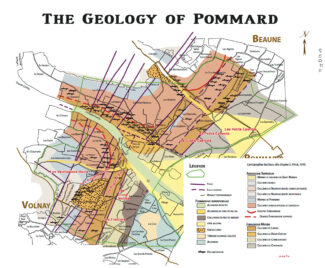
Among the fuller-bodied wines of Burgundy, none benefit more from bottle aging than Pommard. In its youth, its aromas, redolent of blackberry and gooseberry, cherry and ripe plum, are hedonistic and delicious, but with time, intriguing changes take place. At full maturity, flavors metamorphose towards leather, chocolate and pepper. Even young, Pommard should be allowed a period of time in glass or decanter to ‘open up’ as aeration smooths aggressive tannins and allows fruit flavors to blossom.
DOMAINE DE COURCEL
For the past four hundred years, the de Courcel family has produced award-winning Pommard wines from some of the region’s most renowned vineyards. Its reputation is all the more remarkable, considering that the domain never produces more than 30,000 bottles per year.
Essentially built around Premier Cru sites, de Courcel’s 26 acres are peppered across Le Grand Clos des Épenots, Les Rugiens, Les Frémiers and Les Croix Noires. Le Grand Clos des Épenots, which accounts for 50% of the Domaine’s production, and Les Rugiens are in a climat class of their own. The estate is currently managed by Gilles de Courcel, Anne Bommelaer and Marie de Courcel.
Marie is justifiably proud both of her family’s place in Burgundian history and the estate’s commitment to terroir and ecology: “We plough in such a way as to encourage intense biological activity, enabling the vines to better assimilate the minerals contained within the soil. The ploughing also helps the root of the vine penetrate deeper into the ground for a better expression. We optimize ripeness by pruning techniques, including de-budding and green harvesting in early August. We are after a delicate equilibrium in the fruit, and our final harvest is done relatively late so that the September sunshine increases the sugar intensity.”
This commitment carries through to the cellar, where, according to Gilles de Courcel, “Wine making is done over a period of one month following a very thorough selection of grapes. Cold maceration followed by low-temperature fermentation to enable better extraction. Delicate reassembly in the wine vat is done to enhance the color and the tannins, and the process ends with a final post-fermentation carbonic maceration adapted to each cuvée.”
The maturing of the wine is then done in carefully selected oak barrels, replaced by a third each year. After racking (‘sous-tirage’), the wines are bottled without any treatment or manipulation.
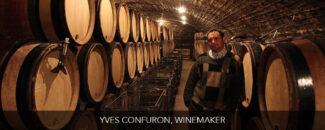
Yves Confuron, de Courcel’s winemaker has always worked organically, believing that anything else would not be true to the expression of the site. Far from being a nod to the current fashion of biodynamics, it is an understanding each site must be treated naturally and maintained immaculately in order to wrest everything that it has to offer in a given vintage. He argues. “You cannot do this by picking anything but fruit as ripe as the vintage can make it, and that the whole bunches must go into the vat because that is all part of the origin.”
Also the owner (with his brother Jean-Pierre Confuron) and winemaker at the prestigious Domaine Confuron-Cotetidot in Vosne Romanée, Yves balances his time delicately between the two domains, creating a house style whose pricing rarely reflects the care that goes into them.
Regional Burgundy
Les Bourgogne 2019
So specific are the cru vineyards of Burgundy that régionale vineyards may exist in the literal shadow of more renowned domains, occasionally separated by hundreds, or even as little as dozens of feet. Régionale wines tend to be culled from vineyards located along the foot of more prestigious wine-growing slopes on limestone soil mixed with some clays and marls, where the earth is stony and quick-draining.
Unlike Bordeaux, where classifications are based on individual châteaux (capable of buying other vineyards and expanding), Burgundian label classifications are more geographically focused. A single vineyard, therefore, may have multiple owners, each with a small piece of the action.
The ‘Bourgogne’ label first appeared in 1937, and in 2017, a further classification permitted wines from vineyards located within the Côte d’Or to be labeled as ‘Bourgogne Côte d’Or’; it’s a great tool for a consumer looking to explore the wide diversity of vineyard among the Hills of Gold while maintaining a terroir-focused, climat approach to Burgundy.
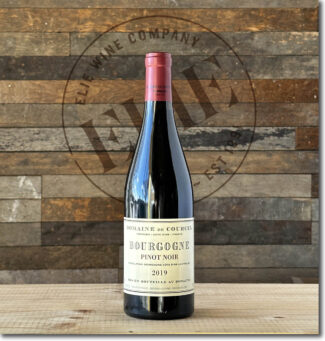 2019 Domaine de Courcel, Bourgogne Rouge ‘Pinot Noir’ ($79)
2019 Domaine de Courcel, Bourgogne Rouge ‘Pinot Noir’ ($79)
The wine originates in a lower vineyard adjacent to Pommard where vines average 40 years and the brown soil has built up at the bottom of the slope on flatter grounds. The same careful consideration is taken with de Courcel’s regional wines as with their Premier Crus, including low-temperature fermentation to enable better extraction. The wine is bold and bright with a slightly meaty edge to its forward berry and sweet spices.
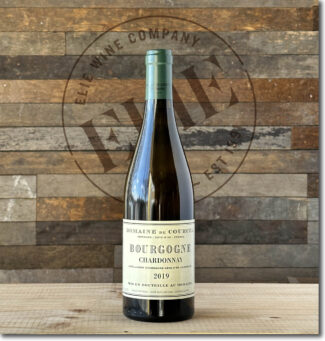 2019 Domaine de Courcel, Bourgogne Blanc ‘Chardonnay’ ($58)
2019 Domaine de Courcel, Bourgogne Blanc ‘Chardonnay’ ($58)
From vines around 20 years old, treated with the same care as the estate’s Premier Crus. Butterscotch, honey and citrus flavors dominate this wine, with a stony minerality that underscores the tertiary aromatics just beginning to emerge.
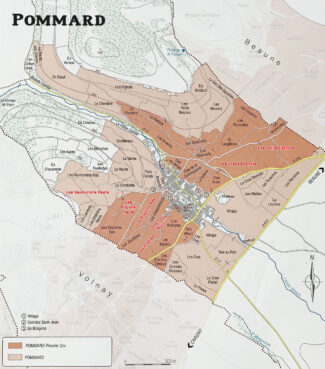
THE FOUR PREMIER CRUS
As mentioned, Domaine de Courcel produces wine from four outstanding Premier Cru vineyards—Le Grand Clos des Épenots, Les Rugiens, Les Frémiers and Les Croix Noires. Taken one by one, the differences and the similarities may be evidence to the marvelous terroir of Pommard:
Premier Cru
Le Grand Clos des Épenots
Le Grand Clos des Épenots is an enclosed monopole, meaning that de Courcel owns the entire plot, 3 acres in Le Grand Clos des Épenots and nine more in Les Petits Épenots. The land is located north of Pommard, at the start of the slope and is east-facing. The top soil, which is rich in clay and limestone, is brown and strewn with limestone rocks and is depth of the soil is around two feet deep, and its structure acts as a natural filter. The vines are 60 years old and produce wines with aromas of red berries and ripe white fruits often associated with Chardonnay—peaches or apricots—although it is planted entirely to Pinot Noir.
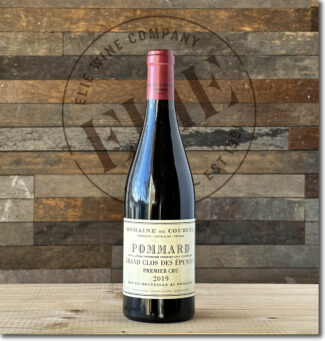 2019 Domaine de Courcel, Pommard Premier Cru Grand Clos des Épenots ($193)
2019 Domaine de Courcel, Pommard Premier Cru Grand Clos des Épenots ($193)
Sumptuous and debonair, the black-cherry aroma shows notes of licorice and cinnamon that ripple beautifully to the edges and re-emerge on a long finish.
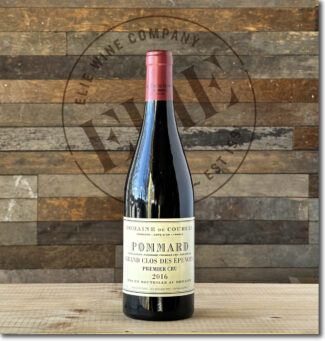 2016 Domaine de Courcel, Pommard Premier Cru Grand Clos des Épenots ($210)
2016 Domaine de Courcel, Pommard Premier Cru Grand Clos des Épenots ($210)
A mature wine that retains a ripe nose and displays notes of cassis, black cherry, spice and a touch of wood smoke.
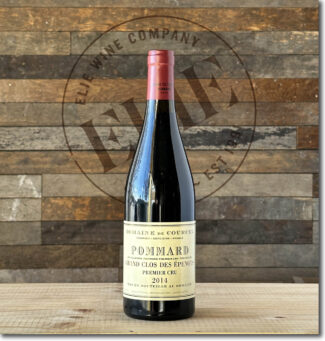 2014 Domaine de Courcel, Pommard Premier Cru Grand Clos des Épenots ($180)
2014 Domaine de Courcel, Pommard Premier Cru Grand Clos des Épenots ($180)
Épenots was hit hard by hail in 2014, losing a substantial portion of the crop. That which remained is lovely with a fresh nose followed by hints of coffee and caramel.
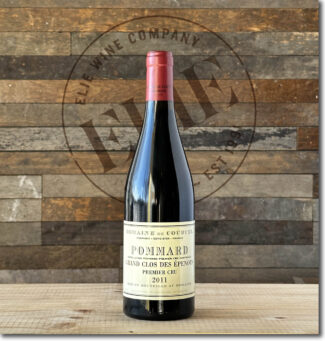 2011 Domaine de Courcel, Pommard Premier Cru Grand Clos des Épenots ($180)
2011 Domaine de Courcel, Pommard Premier Cru Grand Clos des Épenots ($180)
Elegant age with the intensity of youth; the nose shows wild mushroom, forest floor, plum, and sandalwood, while the palate has evolved to dried red cherry and citrus oil extract. It’s bone dry and beautifully acidic.
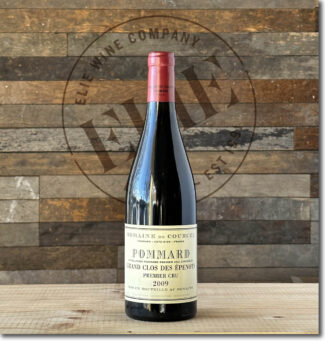 2009 Domaine de Courcel, Pommard Premier Cru Grand Clos des Épenots ($230)
2009 Domaine de Courcel, Pommard Premier Cru Grand Clos des Épenots ($230)
Picked late in the harvest and allowed to ferment 100% whole-cluster. The wine is massively earthy with spice and rich, ripe tannins. A wine which will benefit immeasurably with aeration before drinking.
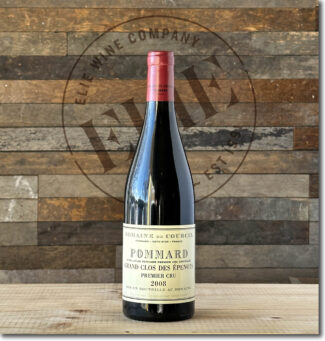 2008 Domaine de Courcel, Pommard Premier Cru Grand Clos des Epenots ($180)
2008 Domaine de Courcel, Pommard Premier Cru Grand Clos des Epenots ($180)
A wine that will highly reward a 90-minute decant to allow the acidity to recede in favor of depth and roundness with a core of dried strawberries, white pepper and the savory sous-bois that is characteristic of Pommard’s ruggedness.
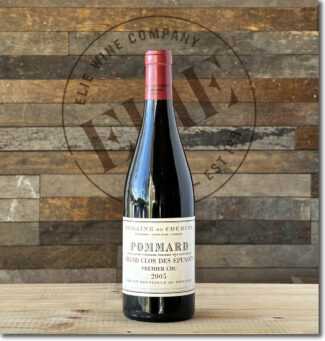 2005 Domaine de Courcel, Pommard Premier Cru Grand Clos des Épenots ($250)
2005 Domaine de Courcel, Pommard Premier Cru Grand Clos des Épenots ($250)
Red berries remain dominant in this unparalleled Pommard, with mint, earth, fig, red licorice all very present. Well integrated and really quite ready to drink now but could also age another 15 years under proper conditions.
Premier Cru
Les Rugiens
Domaine de Courcel’s 3-acre Les Rugiens plot is planted on marlstone and iron-rich clay slopes with eastern exposures. As with the domaine’s Le Grand Clos des Épenots site, these Pinot Noir vines are, on average, 60 years old. Rugiens is one of Pommard’s most highly prized vineyards and, with the Épenots sites, is considered by many to be worthy of Grand Cru status. Rugiens wines are generally full-bodied and brooding in character, with smoky, spicy aromas and are usually capable of aging for many years. It is divided into two parcels bisected by a country lane; Les Rugiens Bas and Les Rugiens Hauts. As in Épenots, wines blended from these two climats may be called Rugiens, but as Les Rugiens Bas is often considered the better of the two, it is often identified on labels.
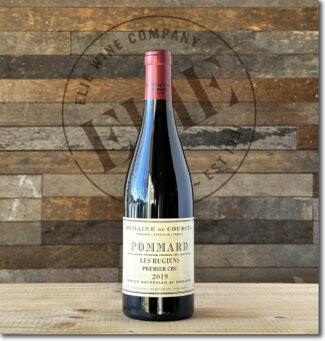 2019 Domaine de Courcel, Pommard Premier Cru Les Rugiens ($255)
2019 Domaine de Courcel, Pommard Premier Cru Les Rugiens ($255)
Fine spicy in an airy nose with rich tannins and concentrated fruit, predominately forest berries.
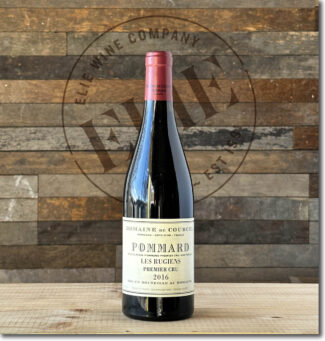 2016 Domaine de Courcel, Pommard Premier Cru Les Rugiens ($280)
2016 Domaine de Courcel, Pommard Premier Cru Les Rugiens ($280)
A vibrant nose that combines blackberry, boysenberry, kirsch, violet, minerals and chocolate. The palate adds smoky blackberries, cassis, cloves and cinnamon in a densely saturated wine with an ample chassis of rich, chewy tannins.
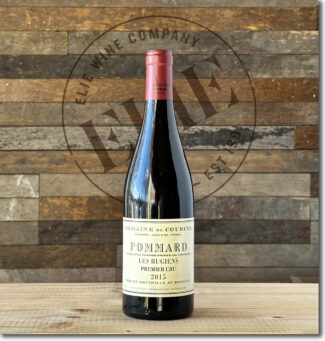 2015 Domaine de Courcel, Pommard Premier Cru Les Rugiens ($320)
2015 Domaine de Courcel, Pommard Premier Cru Les Rugiens ($320)
Effusive black cherry, cassis and violet enshrouded with a backbone of assertive, dusty tannins. All the elements are in the correct proportion and have begun to fully integrate.
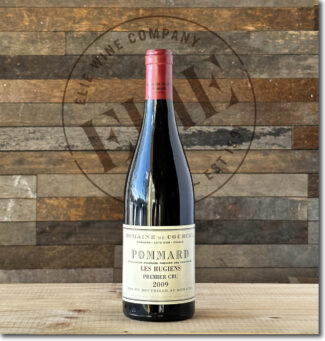 2009 Domaine de Courcel, Pommard Premier Cru Les Rugiens ($350)
2009 Domaine de Courcel, Pommard Premier Cru Les Rugiens ($350)
A truly great Rugiens, massively concentrated, ripe and sumptuously opulent with a subtle minerality that lifts the tannins. It is creamy and rich with a finish that highlights graphite and should continue to improve for another half a century.
Premier Cru
Les Frémiers
‘Les Frémiers’ is a four-acre climat, formerly the property of the Maizière Abbey. The vineyard owes its name to the word ‘fremyer’, which meant ‘firm’ or ‘robust’ in Old French. Adjacent to the ‘Les Fremiets’ vineyard in Volnay, the wines share the same elegance and maturity. Located south of Pommard, right below Les Rugiens at the start of the slope, the brown soil, which is rich with both clay and limestone, is deeper than at Rugiens. The aromas here lean towards fine spices and dried fruit, and the tannins tend to be refined.
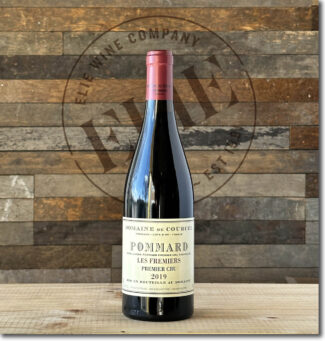 2019 Domaine de Courcel, Pommard Premier Cru Les Frémiers ($149)
2019 Domaine de Courcel, Pommard Premier Cru Les Frémiers ($149)
A highly expressive nose redolent of rose hips and tangy red berries, dried herbs, hibiscus and cranberry with smoke and truffle nuances and acidic flair.
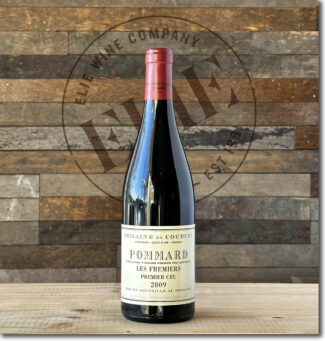 2009 Domaine de Courcel, Pommard Premier Cru Les Frémiers ($220)
2009 Domaine de Courcel, Pommard Premier Cru Les Frémiers ($220)
Intensely perfumed with aromas of autumn berries, sweet and savory spice, oak and a touch of sous bois with iron in a mineral driven finish.
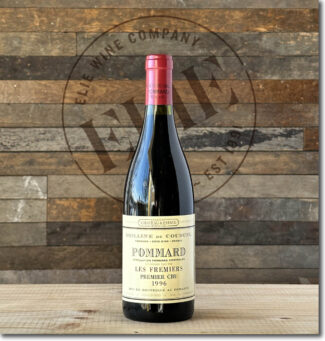 1996 Domaine de Courcel, Pommard Premier Cru Les Frémiers ($220)
1996 Domaine de Courcel, Pommard Premier Cru Les Frémiers ($220)
A perfectly mature Pommard that emits aromas of muddled strawberry, black raspberry and cranberry along with aged saddle leather, forest floor, truffle, white pepper, dried herbs and tar with a finished of crushed rock.
Premier Cru
Les Croix Noires
Les Croix Noires, meaning ‘the black crosses,’ is a small lieu-dit (3.2 acres) located just to the south of Pommard village, in the center of the Pommard appellation. It sits on very gentle east facing slopes about halfway down the band of Premier Cru vineyards and is, in fact, surrounded by them. Les Chaponnières lies on the slope above it and to the west is Les Poutures, with Les Bertins below, and to the east and southeast and Les Frémiers to the south. Domaine de Courcel owns around half of the small vineyard.
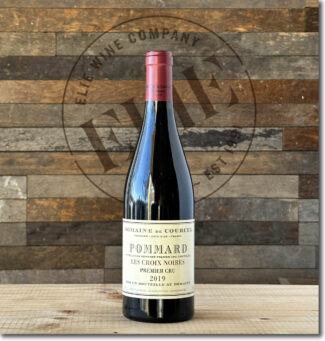 2019 Domaine de Courcel, Pommard Premier Cru Les Croix Noires ($149)
2019 Domaine de Courcel, Pommard Premier Cru Les Croix Noires ($149)
Ripe and rich with a sweet lift above the concentrated fruit with hints of menthol, violet and spice adding breadth to the opulent texture.
LE POMMARD VILLAGE
Pommard is the first major town you come to as you travel south from Beaune and it covers almost 800 acres of vines that radiate from the village center, enough to produce nearly two million bottles per year. 544 acres are rated ‘Villages’ level and about 300 acres are Premier Cru—an extraordinary amount.
Villages—the quality level below Premier Cru—is the most affordable path to understanding the underlying ‘sense of place’ that is the Holy Grail of Burgundian wine ideology. Many of the qualities that are assigned to various Crus are recognizable at this level, if in a slightly dilute form—Savigny’s meatiness, Volnay’s elegance, Vosne-Romanée’s spice and Meursault’s buttery nuttiness. Legal restrictions help to underscore this: Villages wines have a slightly higher yield allowances per hectare, but the grape varieties are restricted. Not only that, but even Grand Cru vineyard owners can declassify grapes when they see fit, and many of these end up in Villages-level wines.
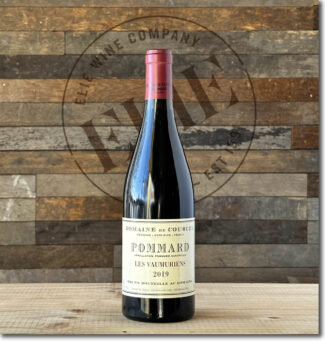 2019 Domaine de Courcel, Pommard ‘Les Vaumuriens’ ($132)
2019 Domaine de Courcel, Pommard ‘Les Vaumuriens’ ($132)
The wine exhibits all the classical flavors typically associated with Pommard like dark fruit notes with earthy undertones. Black cherry, blackberry and violets dominate the nose, while mushroom and fresh potting soil round out a lengthy finish. This is a very age-worthy wine, capable of being cellared for a minimum of 10 more years.
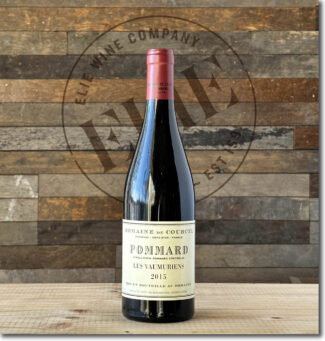 2015 Domaine de Courcel, Pommard ‘Les Vaumuriens’ ($130)
2015 Domaine de Courcel, Pommard ‘Les Vaumuriens’ ($130)
Only 100 cases were imported of this excellent vintage 45-year-old vines on the left slope of Pommard. Their north-north-east aspect helped retain cool freshness in the otherwise-ripe vintage and the flavors have settled.
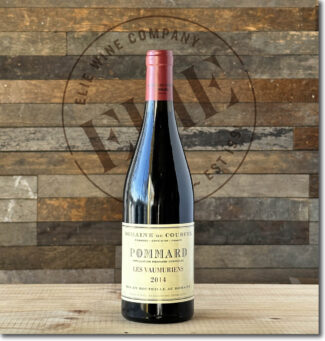 2014 Domaine de Courcel, Pommard ‘Les Vaumuriens’ ($180)
2014 Domaine de Courcel, Pommard ‘Les Vaumuriens’ ($180)
Restrained aromas of raspberry and earth dominate the bouquet. In a very dry style but fine-grained in the middle palate, showing good texture for the year. The tannins, rougher in the first few years, but have now integrated to allow the wine to express a bit of finishing sweetness.
Vintage Journal
2019 Vintage: The Magic of Years Ending With ‘9’ Actually Worked
Since the start of the 20th century, every vintage that has ended with a “9” has been wonderful. The only downside to 2019 was below-average volumes, but otherwise, it was a thrilling year for Pinot Noir in particular, which delivered wines bursting with perfume and succulent fruit. Jacques-Frédéric Mugnier—who crafted some of 2019’s most compelling wines—remarked the ‘19s were “Supple and enveloping, simultaneously serious and immensely charming. I have never before encountered a vintage that tasted so good, so young.”
2016 Vintage: A Pleasant Surprise
An extremely mild winter gave way to a cooler than average March, although conditions eventually warmed up enough to allow for a typically-timed budburst. Alas, a tempestuous spring followed with harrowing frosts where the worst-hit vineyards were those at high altitude as the sun hammered into the frozen vines, adding literal burns to the already severe frost damage. Overall, the harvest was modest and for some producers, the smallest one on record. But the grapes that survived the frosts were generally of exceptionally high quality, and in top estates, Burgundy 2016 is a classic vintage renowned for its balance and poise. The reds, in particular, are rich, ripe and balanced.
2015 Vintage: Simply Sublime!
For the most part, the 2015 vintage was one of remarkable harmony between nature and wine cellars; temperatures were dry, skies sunny, and when rain fell, it was sporadic and needed. Flowering took place in early June, followed by véraison in mid-July, with the start of harvesting happening at the end of August. Weather dictated the tempo, and winemakers had to adapt to a sustained pace. Those who stepped up laid the foundation of a great vintage.
2014 Vintage: All The Makings of A Great Vintage
2014 got off to a good start; the spring was warm and dry, leading to a fairly early bud break and an uneventful flowering in early June. Problems began later in the month with a hailstorm that tore through Pommard and caused considerable damage with some estates reporting losses that averaged about half their usual crop. The harvest was smaller than usual, but the quality was high, with the reds in particular showing classic character—refined and concentrated without being overbearing, and a freshness ideal for early drinking, while the best examples have enough character and structure to warrant long-term cellaring.
2011 Vintage: Pleasure is The Watchword
2011 proved to be a tricky and challenging vintage for growers, but experience prevailed and the wines turned out well, with the reds in particular aromatic and fresh with considerable purity of fruit. The early summer was cool, but in late June temperatures soared, and the heat spike caused sunburn on exposed bunches. July was cooler than April, and hail on July 12 smashed into the southern Côte de Beaune. In late July the weather improved and it stayed warm into August, but storms persisted sporadically. Much depended on the health of the grapes and on the strength of the skins and thus their resistance to disease, and since this varies from site to site, grape sorting was essential.
2009 Vintage: Magnificent Bourgogne!
Initial vintage comparisons made with 2005 and even 1990 were a trifle optimistic, but the wines have proven to be beautifully ripe and fleshy and of a surprisingly uniform quality throughout the Côte de Beaune. Spring was hot and dry and flowering was early, beginning in late May. Stormy spells in mid-July threatened mildew, but warm weather soon returned and most of August was hot, allowing the fruit to ripen perfectly, especially since early September continued warm. In Pommard, a little September rain was timely and welcome and growers who picked at the optimum time have been rewarded with superb wines.
2008 Vintage: A Lovely Turnaround
2008 was largely good throughout Burgundy with a damp and somewhat chilly spring delaying budburst, but the weather cleared and remained warm. Pommard suffered a vicious hailstorm in late July that reduced the crop, but September brought settled sunny weather and cool winds that whipped round the vineyards and dried the vines. The sunny days also pushed the grapes towards phenolic ripeness, while cool nights helped retain essential acidity through an idyllic harvest. The best examples of Pommard show bright, concentrated fruit with balanced acidity, gentle tannins and a distinct spiciness.
2005 Vintage: An Exceptional Year
It’s no secret that 2005 was legendary throughout Burgundy, and the wines of Pommard happily went along for the ride and became a top-producing appellation. A warm, easy spring saw both an early budburst and flowering and led to a dry, sunny June and July. In August, temperatures dipped a bit and September saw some sporadic relieving showers, which helped rehydrate the vines. The late warm weather also served to slowly usher the grapes to phenolic ripeness. These superb conditions allowed for an easy and relaxed harvest where almost without exception, grapes were thick-skinned and in exceptionally good health.
1996 Vintage: Long Lived
A fine vintage characterized by fresh acidity, leading to long-lived wines. Very warm weather in June led to a swift flowering, but the summer was a bit unsettled and August was relatively cool. But by late August and through September, sunny and dry conditions prevailed in Pommard, with cool nights that conserved the balance in the grapes. The outcome was a large crop of extremely healthy grapes, with high sugars, excellent acidity and deep colors.
- - -
Posted on 2023.03.16 in Côte de Beaune, Pommard, France, Burgundy
Featured Wines
- Notebook: A’Boudt Town
- Saturday Sips Wines
- Saturday Sips Review Club
- The Champagne Society
- Wine-Aid Packages
Wine Regions
Grape Varieties
Aglianico, Albarino, Albarín Blanco, Albarín Tinto, Albillo, Aleatico, Arbanne, Aubun, Barbarossa, barbera, Beaune, Biancu Gentile, bourboulenc, Cabernet Franc, Cabernet Sauvignon, Caino, Caladoc, Calvi, Carcajolu-Neru, Carignan, Chablis, Chardonnay, Chasselas, Clairette, Corvina, Cot, Counoise, Erbamat, Ferrol, Fiano, Frappato, Friulano, Fromenteau, Fumin, Garnacha, Gewurztraminer, Godello, Graciano, Grenache, Grolleau, Groppello, Juan Garcia, Lambrusco, Loureira, Macabeo, Macabou, Malvasia, Malvasia Nera, Marsanne, Marselan, Marzemino, Melon de Bourgogne, Merlot, Mondeuse, Montanaccia, Montepulciano, Morescola, Morescono, Moscatell, Muscadelle, Muscat, Natural, Nero d'Avola, Parellada, Patrimonio, Petit Meslier, Petit Verdot, Pineau d'Aunis, Pinot Auxerrois, Pinot Blanc, Pinot Gris, Pinot Meunier, Pinot Noir, Poulsard, Prieto Picudo, Rondinella, Rousanne, Roussanne, Sangiovese, Sauvignon Blanc, Savignin, Semillon, Souson, Sparkling, Sumoll, Sylvaner, Syrah, Tannat, Tempranillo, Trebbiano, Trebbiano Valtenesi, Treixadura, Trousseau, Ugni Blanc, vaccarèse, Verdicchio, Vermentino, Viognier, Viura, Xarel-loWines & Events by Date
- April 2024
- March 2024
- February 2024
- January 2024
- December 2023
- November 2023
- October 2023
- September 2023
- August 2023
- July 2023
- June 2023
- May 2023
- April 2023
- March 2023
- February 2023
- January 2023
- December 2022
- November 2022
- October 2022
- September 2022
- August 2022
- July 2022
- June 2022
- May 2022
- April 2022
- March 2022
- February 2022
- January 2022
- December 2021
- November 2021
- October 2021
- September 2021
- August 2021
- July 2021
- June 2021
- May 2021
- April 2021
- March 2021
- February 2021
- January 2021
- December 2020
- November 2020
- October 2020
- September 2020
- August 2020
- July 2020
- June 2020
- May 2020
- April 2020
- March 2020
- February 2020
- January 2020
- December 2019
- November 2019
- October 2019
- September 2019
- August 2019
- July 2019
- June 2019
- May 2019
- April 2019
- March 2019
- February 2019
- January 2019
- December 2018
- November 2018
- October 2018
- September 2018
- August 2018
- July 2018
- June 2018
- May 2018
- April 2018
- March 2018
- February 2018
- January 2018
- December 2017
- November 2017
- October 2017
- September 2017
- August 2017
- July 2017
- June 2017
- May 2017
- April 2017
- March 2017
- February 2017
- January 2017
- December 2016
- November 2016
- October 2016
- September 2016
- August 2016
- July 2016
- June 2016
- May 2016
- April 2016
- March 2016
- February 2016
- January 2016
- December 2015
- November 2015
- October 2015
- September 2015
- August 2015
- July 2015
- June 2015
- May 2015
- April 2015
- March 2015
- February 2015
- January 2015
- December 2014
- November 2014
- October 2014
- September 2014
- August 2014
- July 2014
- June 2014
- April 2014
- March 2014
- February 2014
- January 2014
- December 2013
- November 2013
- October 2013
- September 2013
- August 2013
- July 2013
- June 2013
- May 2013
- April 2013
- March 2013
- February 2013
- January 2013
- December 2012
- November 2012
- October 2012
- February 2004
Search



